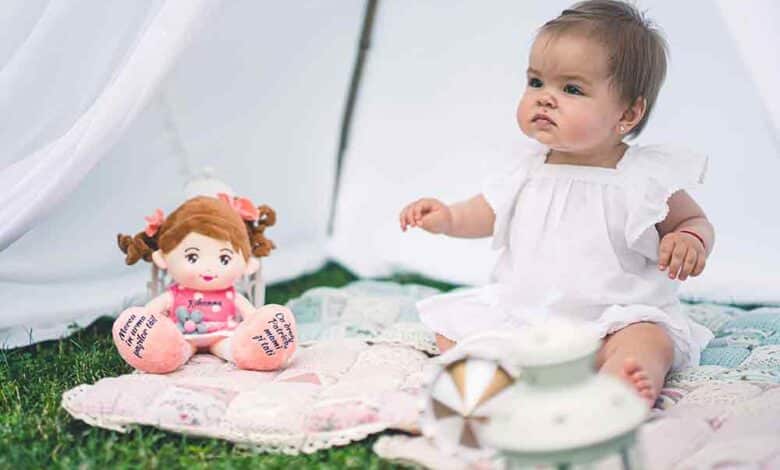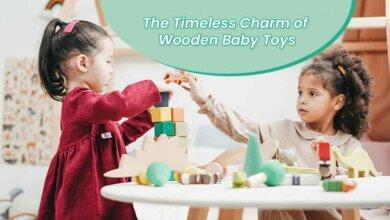Baby Doll Toys: A Guide to Choosing the Perfect Companion for Your Child
Discover the Magic: Baby Doll Toys for Every Child

Introduction
- The timeless appeal of baby doll toys
- Understanding the importance of dolls in a child’s development
The Benefits of Baby Doll Toys
- Emotional development and nurturing skills: Baby doll toys provide children with the opportunity to develop empathy and learn how to care for others. Interacting with dolls can help them understand emotions and practice nurturing behaviors.
- Boosting social and communication skills: Playing with baby doll toys encourages children to engage in pretend play, which involves interacting with others. This helps them develop social and communication skills as they learn to express themselves, share, and cooperate.
- Encouraging creativity and imagination: Baby dolls serve as catalysts for imaginative play. Children can invent distinct storylines, scenarios, and role-play situations, allowing their creativity to thrive.
- Fostering empathy and compassion: Through caring for their baby dolls, children learn to be compassionate and considerate. They can project and comprehend the needs of their dolls, fostering the development of empathy towards others.
Types of Baby Doll Toys
Newborn baby dolls
Realistic features and details: Newborn baby dolls are often designed to replicate the features and characteristics of real-life newborns. They have lifelike facial expressions, delicate features, and even soft bodies to enhance the experience.
Simulating the newborn experience: These dolls may come with interactive features such as crying, cooing, and sucking on pacifiers. These realistic functions further enhance the pretend play experience.
Toddler baby dolls
Sturdier construction for active play: Toddler baby dolls are designed with durability in mind. They are typically made of sturdy materials to withstand rough handling during active play.
Simple features for easy interaction: These dolls often have simplified features such as moveable limbs and easy-to-dress outfits, making them more manageable for young children to interact with.
Fashion baby dolls
Stylish clothing and accessories: Fashion baby dolls come with a variety of trendy outfits and accessories, allowing children to explore different styles and engage in fashion-based imaginative play.
Promoting fashion-based imaginative play: These dolls provide opportunities for children to express their creativity by experimenting with different outfits and creating unique fashion combinations.
Factors to Consider When Choosing a Baby Doll
- Age appropriateness: Consider the recommended age range for the doll to ensure it suits your child’s developmental stage.
- Size and weight considerations: Choose a doll that is appropriate in size and weight for your child. Consider factors such as ease of carrying and potential hazards.
- Material and durability: Look for dolls made from safe and durable materials that can withstand playtime.
- Accessibility features for differently-abled children: Some baby dolls are designed with features that make them accessible and suitable for children with disabilities, such as easy-to-grip limbs or assistive technology.
- Preferences and interests of the child: Consider your child’s likes and dislikes, as well as their interests. This ensures the doll resonates with their personal preferences.
Caring for Baby Doll Toys
- Basic cleaning and maintenance: Regularly clean the doll’s surface with a mild soap and water solution.
- To maintain the doll’s condition, refrain from immersing it in water or utilizing harsh chemicals.
- . Also, ensure the doll’s hair is kept untangled and free from dirt or debris.
- Storage tips for prolonging their lifespan: Store dolls in a cool, dry place away from direct sunlight to prevent fading or damage. Keep them in a safe and organized manner to minimize the risk of loss or breakage.
- Repairing minor damages: If a doll sustains minor damages, such as loose limbs or torn clothing, consider simple repairs using non-toxic glue or sewing kits. However, for more significant damages, it may be best to seek professional assistance.
Enhancing Playtime with Baby Doll Toys
- Creating a nurturing environment: Designate a special area or a doll nursery where your child can interact with their baby doll comfortably. Provide props such as a blanket, bottles, and toys to enhance the pretend play experience.
- Introducing role-playing scenarios: Encourage your child to engage in role-playing scenarios, such as feeding, changing diapers, or putting the doll to sleep. This enables them to mimic real-life situations and further enhance their nurturing skills.
- Incorporating accessories and playsets: Add accessories and playsets, such as a stroller or a dollhouse, to expand the play possibilities and create a more immersive experience.
- Joining in and encouraging interactive play: Participate in your child’s playtime with their baby doll, engaging in conversations and interactions. This not only strengthens your bond but also encourages your child to develop their communication skills.
The Role of Diversity in Baby Doll Toys
- Importance of diverse representation: Baby dolls should reflect and celebrate diversity to promote inclusivity and teach children about different cultures, ethnicities, and abilities.
- Exploring dolls with different ethnicities and cultures: Look for baby dolls that represent various ethnicities and cultures, so children can learn about and appreciate diversity from an early age.
- Inclusive dolls for differently-abled children: Choose inclusive dolls, featuring disabilities such as wheelchairs or prosthetics, to promote understanding and acceptance among children.
Baby Dolls in Education and Therapy
- Doll therapy for elderly individuals: Baby dolls can be used therapeutically to provide comfort and stimulation for elderly individuals, especially those living with dementia or Alzheimer’s disease.
- Gender stereotypes and doll play: Doll play is not exclusive to one gender. Both boys and girls can benefit from engaging with baby doll toys, promoting gender equality, and breaking down stereotypes.
- Addressing concerns about encouraging materialism: Baby dolls teach children about care and empathy, focusing on nurturing rather than materialistic values. Playtime with dolls emphasizes emotional connections rather than material possessions.
- Dispelling notions of dolls promoting negative body image: Baby dolls come in various shapes and sizes, teaching children that diversity is beautiful. Encourage body positivity and self-acceptance through conversations around body image and diversity.
Understanding the History of Baby Doll Toys
- Early examples of dolls in ancient civilizations: Dolls can be traced back to ancient civilizations, such as Egypt and Greece, where they held cultural and religious significance.
- Evolution and cultural significance of baby dolls: Baby dolls have evolved over centuries, reflecting the changing societal norms, cultural values, and technological advancements.
- Iconic baby dolls throughout history: From the iconic Raggedy Ann and Betsy Wetsy dolls of the early 20th century to modern collectibles, baby dolls have held a special place in the hearts of children and collectors alike.
Choosing Ethically Made Baby Dolls
- Sustainable materials and manufacturing practices: Look for baby dolls made from eco-friendly and non-toxic materials. Explore brands that place a premium on eco-friendly manufacturing practices.
- Supporting fair trade and ethical sourcing: Choose baby dolls from brands that promote fair trade principles, ensuring that workers involved in the production are treated fairly and paid appropriately.
Baby Doll Collecting as a Hobby
- Elements to consider when starting a collection: Research different doll genres, styles, and periods to discover what interests you. Consider factors such as condition, rarity, and personal preferences.
- Popular doll brands and limited editions: Explore renowned doll brands and limited edition releases to find unique and valuable additions to your collection.
- Displaying and caring for a doll collection: Showcase your doll collection using display cases or shelves, protecting them from dust and sunlight. Follow proper cleaning and preservation techniques to ensure their longevity.
A Look Into the Future of Baby Doll Toys
- Technological advancements in interactive dolls: Expect to see more interactive baby dolls incorporating advanced features such as touch sensors, voice recognition, and realistic movements.
- Incorporation of artificial intelligence and robotics: Baby dolls may embrace AI and robotics technology, offering enhanced interactivity, learning capabilities, and even companionship.
Summary
- Recap of the benefits of baby doll toys
- Crucial factors to consider when choosing a doll.
- Importance of diversity and inclusivity in dolls
- Potential educational and therapeutic applications
- The enduring appeal and evolution of baby dolls
Frequently Asked Questions (FAQs)
- Can boys play with baby dolls too? B. Are baby dolls only for young children? C. How can I encourage my child to take care of their doll? D. What should I do if my child loses interest in their doll?



